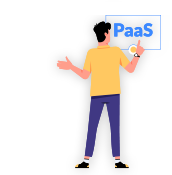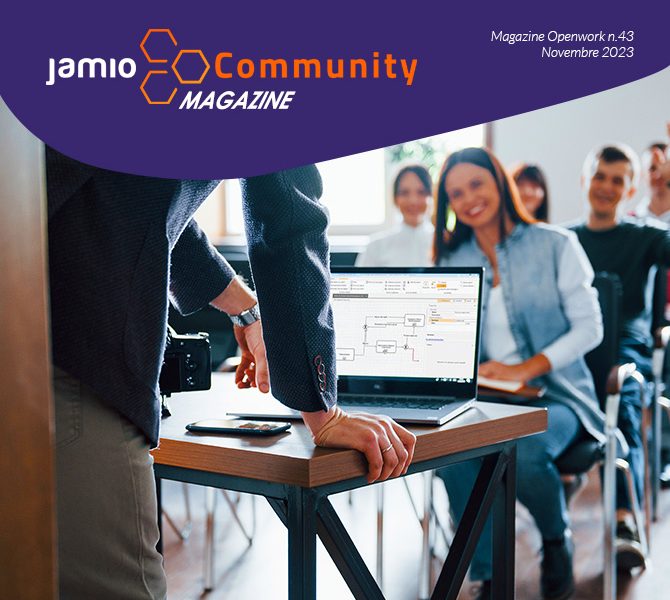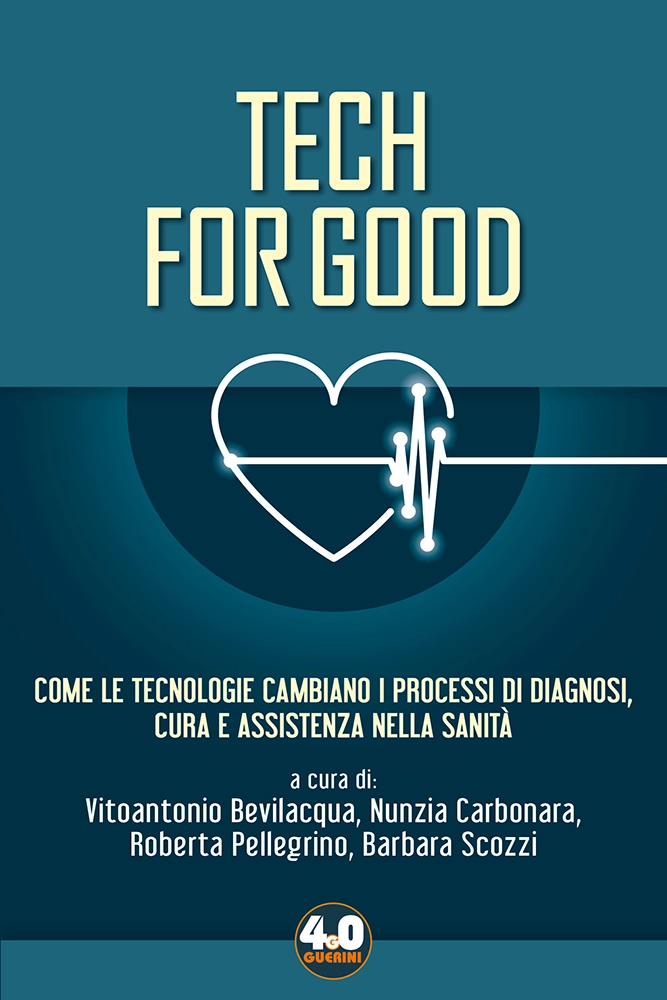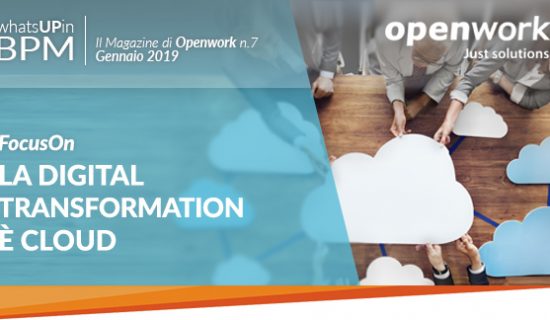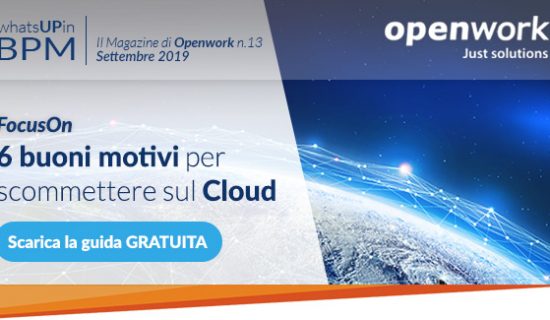The growing presence of low-code and no-code application development platforms on the market is leading to the emergence of new and different professionals who, without specific skills in software programming, can deal with software solutions.
Citizen Developer is the name for such a figure, and Gartner inc. already said a few years ago: ''A citizen developer is an employee who creates application capabilities for consumption by themselves or others, using tools that are not actively forbidden by IT or business units. A citizen developer is a persona, not a title or targeted role. They report to a business unit or function other than IT."
The strength is in being a professional figure who combines business domain skills and analytical ability with the ability to quickly "ground" working solutions and/or closely follow teams building entreprise-class software solutions.
The Department of Management at the University of Turin, with some foresight, has taken the lead in promoting this University Professional Development Course designed with the collaboration of EY, KPMG and the Association of Technologies for Accounting and Accountability that will target young undergraduates with three-year degrees, master's degrees and ITS graduates and will train Citizen Developers.
Topics will be covered in theoretical lectures and especially in hands-on labs for which the Entreprise class no-code Jamio openwork application development platform will be used.
The initiative is also aimed at companies that can use the tool for professional qualification of their own resources by making them immediately productive on the issue.
The short master's program will be 125 hours in length, with 40 hours of online lectures 85 of offline content.
All participants will be left with an environment on the Jamio cloud to use both for exercises and for future experimentation that they can continue to carry out in their home organizations.
FOR MORE INFO
Prof. Silvana Secinaro
+39 - 338.9301725
silvana.secinaro@unito.it
Extend processes outside your own organization. First example: managing requests for quotes

FOREWORD
Many organizations' business processes are extended or intercompany processes, that is, they extend beyond the boundaries of the organization.
These processes can include collaboration and information exchange between companies or entities to create value for all involved. We can identify them for example in supply chain management involving suppliers, but also in customer relationship management , business partnerships (with partners or agents), inter-company collaboration, shared logistics, coordination of projects between different organizations, or even in some Recruiting activities.
One doesn't always have full awareness of managing an extensive process in one's own organization, and it may be the case that if one sets out to streamline the process with the support of IT tools, going so far as to digitize it, one tends to exclude the piece of the flow involving external entities or organizations. However, even if this doesn't happen, this represents a neuralgic point of management.
Instead, effective management of such processes is achieved precisely by using appropriate tools to govern and monitor the entire flow, avoiding a multiplicity of systems and a redundancy of information. And to gain efficiency by outsourcing activities that would otherwise be performed in-house.
In this issue we try to discover how by looking at the use case of Estimates Management of interest in supplychain-procurement.
ORGANIZATIONAL NEEDS
Suppose we are on a construction site and in this setting, as in so many other settings, the materials procurement process requires careful planning, diligent management and effective communication with suppliers in order to ensure the success of the construction project. The need is to manage the initial phase of this process, which is that of supplier evaluation.
Having defined the materials that need to be procured, the purchasing department of an organization needs to request a quote for the same supply from N potential suppliers, asking each one for both the quote and other information in order to make a proper assessment.
The simplest and most commonly used way to manage this process is as follows, where the activities are all in the charge of a purchasing office operator who:
1) Define the list of materials in an excel table;
2) composes in word or other instrument like a letter of request for quotation in which it enters the details of the requested supply;
3) Composes a generic email attaching the request and sends it N times to various recipients or uses CCN;
4) waits for the N recipients to respond by e-mail;
5) collects individual responses, as they come in, into a folder;
6) analyze all the answers;
7) aggregates into a comparative table with the information obtained.
This flow makes use of individual productivity tools such as word, e-mail and excel that, while supporting the operator, still leave him or her the owner of everything.
Providers participate indirectly in the flow, but they are autonomous in their operations and the information they provide requires subsequent processing. The result is a great waste of time and possible errors.
THE SOLUTION.
By trying to manage this flow with a process automation tool such as Jamio, we instead achieve complete end-to-end automation of the process, including the collection and aggregation of responses from external parties with significant time and cost benefits and more.
The previously decribed flow becomes as follows.
The purchasing office operator:
1) defines the list of materials in a special tab in the system and indicates the recipients by selecting them from a master file, also in the same interaction tab;
2) click on a button to delegate all other tasks to the system.
The system, in full automation:
3) Self-composes the letter of request for proposal, customized for each supplier;
4) Create a questionnaire for the provider, and prepare a link to it;
5) self-composes the accompanying e-mail, customized for each supplier, including the link to the questionnaire and attaching the letter of request for quotation, and sends it out;
6) Monitors the completion of the questionnaire, collects the outcomes and reports them in the application form;
The purchasing office operator can thus simply and uniquely:
7) consult the outcomes and information collected in real time, again in the same interaction tab.
Clearly, all those human activities that involve loss of time and margin for error, such as filling out the request for proposal or e-mail from predefined templates or collecting and aggregating responses, are thus devolved to a computer system.
Not only that, participation in the process by the external actors, the suppliers, becomes active, as the supplier imputes in a guided manner his information into an object-the questionnaire-orchestrated by the system. This enables real-time knowledge of the outcomes directly in the system, moreover without the need to distribute credentials to the supplier.
THE BENEFITS.
- reduction of management time
- reduction of errors
- Increased branding reputation with suppliers
- Instant Sharing of Data and Documents
- Employment of operators in higher value-added activities
- Organizational efficiency
Interested in receiving more info on the topic?
Request a demo
Digital skills enhancement in the agri-food sector and in the green & blue economy
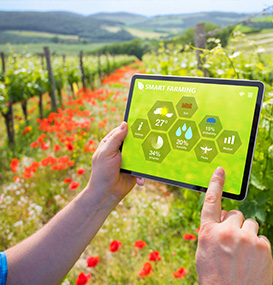
In March 2023, Ciheam Bari launched a challenge in collaboration with the Productive District of Apulian Informatics, the purpose of which was to understand ways and means to prevent risks in the agricultural sector by taking advantage of the vast amount of data that new technologies can collect.
The challenge was an opportunity to increase the digital skills of 30 selected young graduates from various nationalities such as Albania, Montenegro, Egypt and Italy engaged in redesigning tools and processes to enable farmers and producers to prevent crop-related risks.
In the 3-month training course, the students were accompanied by 20 companies, including Openwork, which involved them in 6 project works.
The challenge proposed by Openwork in Agriculture 4.0 is summarized in the question, 'How can we best integrate all data related to irrigation activities to ensure the best customer experience from a service design perspective?'
It was intended to provide a starting point for the design and application of the various tools of DT(Design Thinking), describing the design context, the actors involved in it and the objectives.
The choice of theme was made considering that:
- Agriculture 4.0 uses innovative technologies, such as the Internet of Things (IoT), to improve agricultural productivity and sustainability. Analysis of data generated by IoT equipment can help farmers detect anomalies that could indicate problems or risky situations for crops;
- Digitization makes it possible to speed up response times, structure response procedures, refine response methodologies, and manage the risk management cycle through the detection, response, prevention phases. The use of no-code technologies enables incremental and continuous improvements to be implemented;
- Earth observation with satellite remote sensing data can be considered as part of an IoT system that adopts video surveillance from space. Through satellite monitoring, vegetative anomalies can be identified that can be used to optimize management processes according to Precision Farming principles.
Openwork's designated mentor, Philip Vitale, allowed students to carry out analysis and development activities until they developed a Jamio POC (Proof Of Concept) that, integrated with an irrigation system, deals with:
- Make it easy for farmers and producers who don't yet have digital experience to manage and read the data
- Be Anomaly detection, that is, able to respond quickly to anomaly situations by mitigating the risk or damage
"Digital technology has changed and will continue to change our lives, but this is a cross-cutting sector. Only by working together will it be possible to reach new markets and take a leading role in a global challenge that we must face not alone but hand in hand, moving along a Mediterranean path, a path toward development," this was the statement by Alessandro Delli Noci, Councillor for Economic Development of the Apulia Region, who spoke at the closing event of the Project, which was attended by several regional and national institutions.
Openwork at the 4th edition of the Apulia CyberSecurity Forum at Exprivia
The 4th annual event dedicated to CyberSecurity was held in Molfetta, at Exprivia headquarters, October 17-20, 2023.
The conference, which focused on human factor analysis and training in the context of security, hosted a talk by Cosimo Lionetti, Research Analyst at Openwork with a speech entitled No-code approach to defining an incident response management model.
Want more info on the no-code approach?
Tell us about your need
Tech For Good: openwork among the authors of a Guerini and Associates publication devoted to health care technology

Released recently by Guerini and Associates as part of the Guerini 4.0 Series, the text Tech For Good - How Technologies Change Diagnosis, Treatment and Care Processes in Health Care consists of a collection of 10 use cases selected to exemplify the changes taking place and the economic, social and clinical-health benefits, obtained by the respective health care facilities as a result of the interventions made.
2 of the 10 cases were implemented thanks in part to the intervention of Openwork and its Jamio openwork technology.
The first is the case of IRCCS Casa Sollievo della Sofferenza, addressed in Chapter 4 titled Innovation in Care Processes: the Case of Multiple Sclerosis Patients written by Maurizio Leone of IRCCS, Angela Nuzzi and Barbara Scozzi of Bari Polytechnic and Martin Arborea of Openwork.
The second is the case of the Center for Neurodegenerative Diseases and the Aging Brain (Tricase) led by Prof. Logroscino, addressed in Chapter 5 entitled Web Platforms for Multidisciplinary Management of Patients with Neurodegenerative Diseases written by Giancarlo Logroscino, Salvatore Nigro and Marco Musio of the Center and Martin Arborea and Nicola Altieri of Openwork.
In both papers, the value of the no-code approach applied to healthcare is highlighted.





